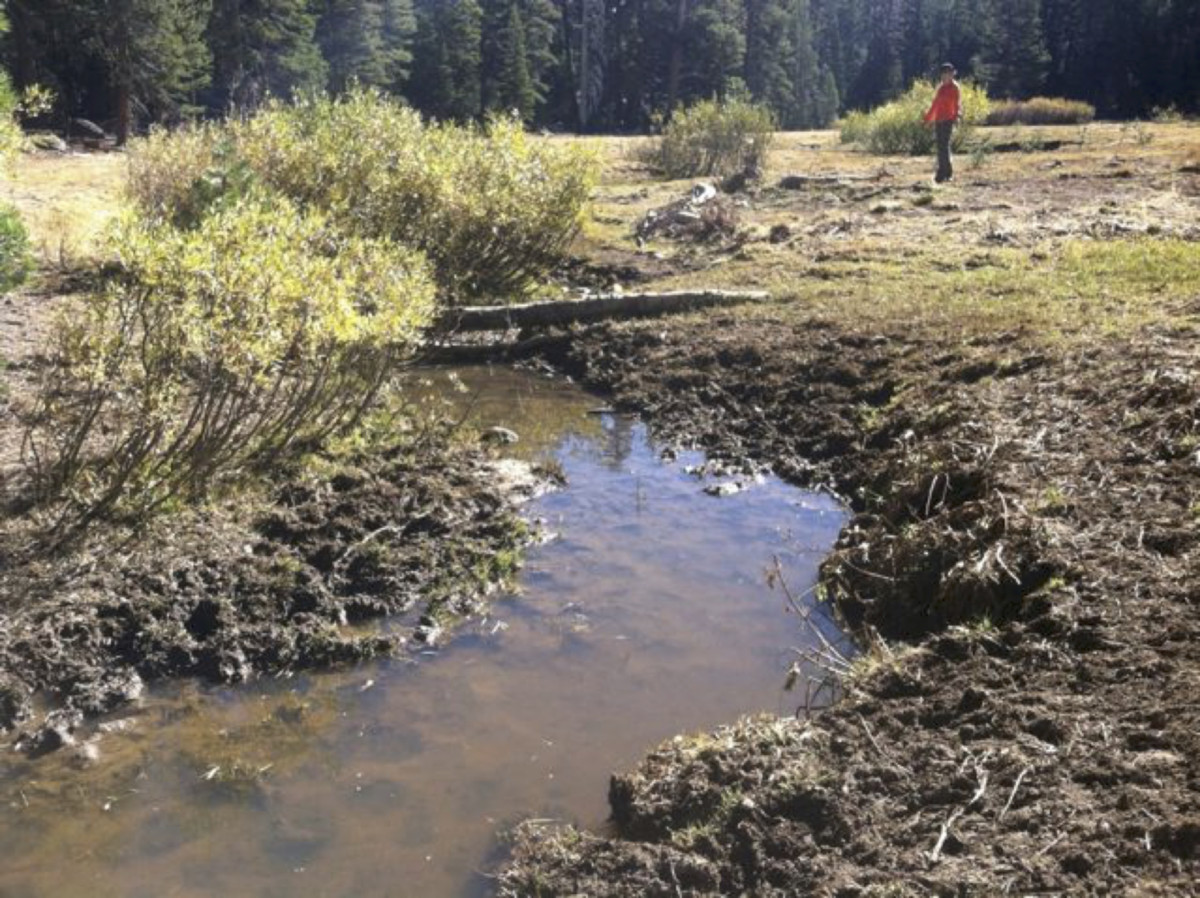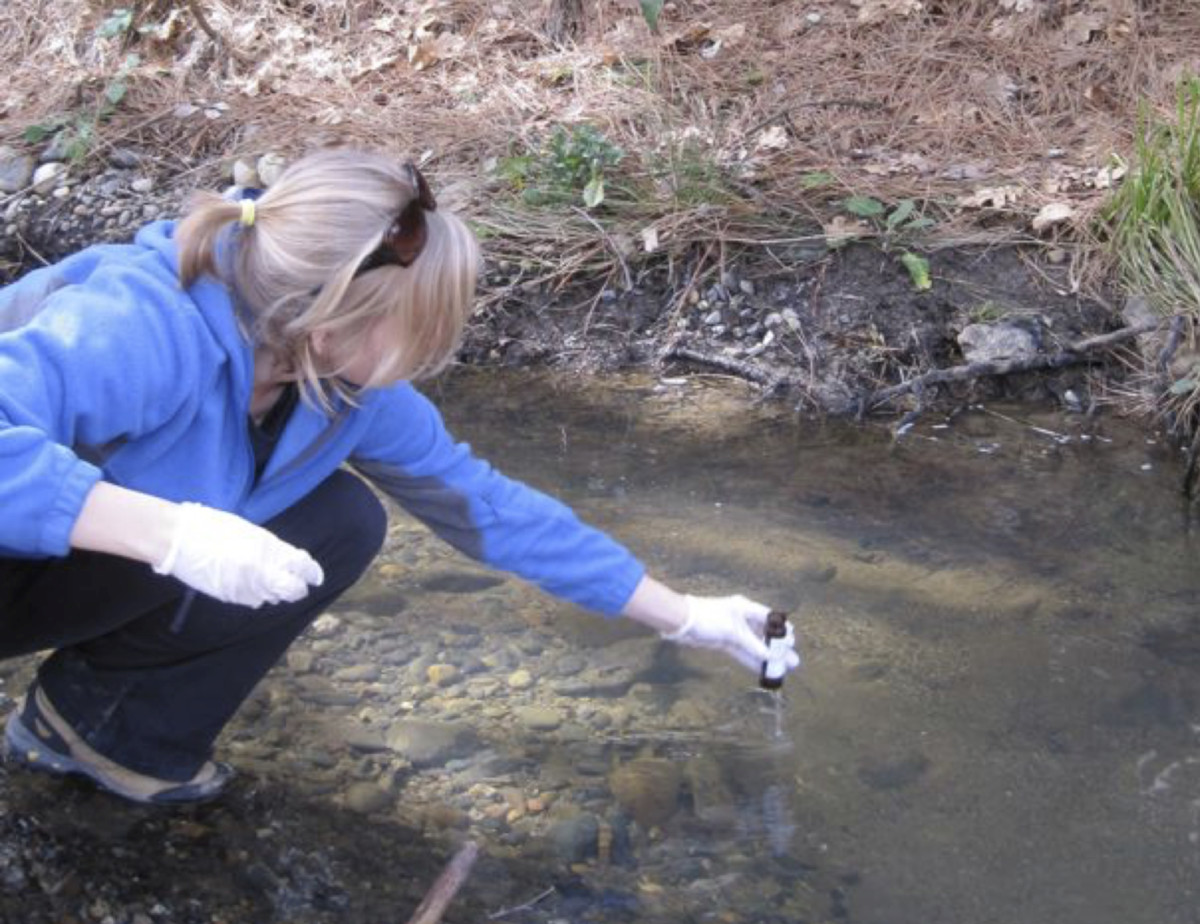Frustrated by observing livestock waste deposited adjacent to streams in the local forest, CSERC biologist Lindsey Myers contacted State Water Board staff in 2009.
Following strict state procedures, she established a detailed monitoring plan and complied with all study protocols. That began many years of sampling of local forest streams by CSERC biologists, with all samples carefully transported to an independent laboratory that tested the samples and documented the results.

Those water quality studies produced strong evidence that streams were contaminated by fecal coliform and E. coli. Prior to cattle coming into the forest to graze each summer season, stream water was generally of good quality. But once cattle were permitted to be present for extensive time, fecal coliform counts in water samples shot up to levels unsafe for recreational contact by forest visitors.
Lindsey coordinated with other specialists to produce two scientific papers that were published in journals as peer-reviewed studies. CSERC passed along to the Water Board copies of those studies, with their evidence of fecal coliform contamination of six forest streams. After years of agency review of all available data, the Central Valley Regional Water Board this year proposed that those six streams within the Stanislaus Forest should be added to a 303(d) list of impaired waters. That proposed listing was based primarily upon the years of detailed water sampling done by Lindsey and other biologists who assisted with water quality sampling of those streams.

Not surprisingly, the Water Board’s proposal to list the streams resulted in sharp opposition from pro-grazing interests. They apparently fear that if these streams end up listed as impaired due to CSERC’s sampling data, other streams that are likely to have excessive levels of pathogenic bacteria may also be listed in the future as impaired. Such a listing could force the Forest Service to restrict livestock presence along stream segments with proven violations of water quality safety standards. As the newslsetter goes to press, intense political pressure is being applied to oppose the proposal to list the six streams. Stay tuned!
Previous ~ Table of Contents ~ Next

